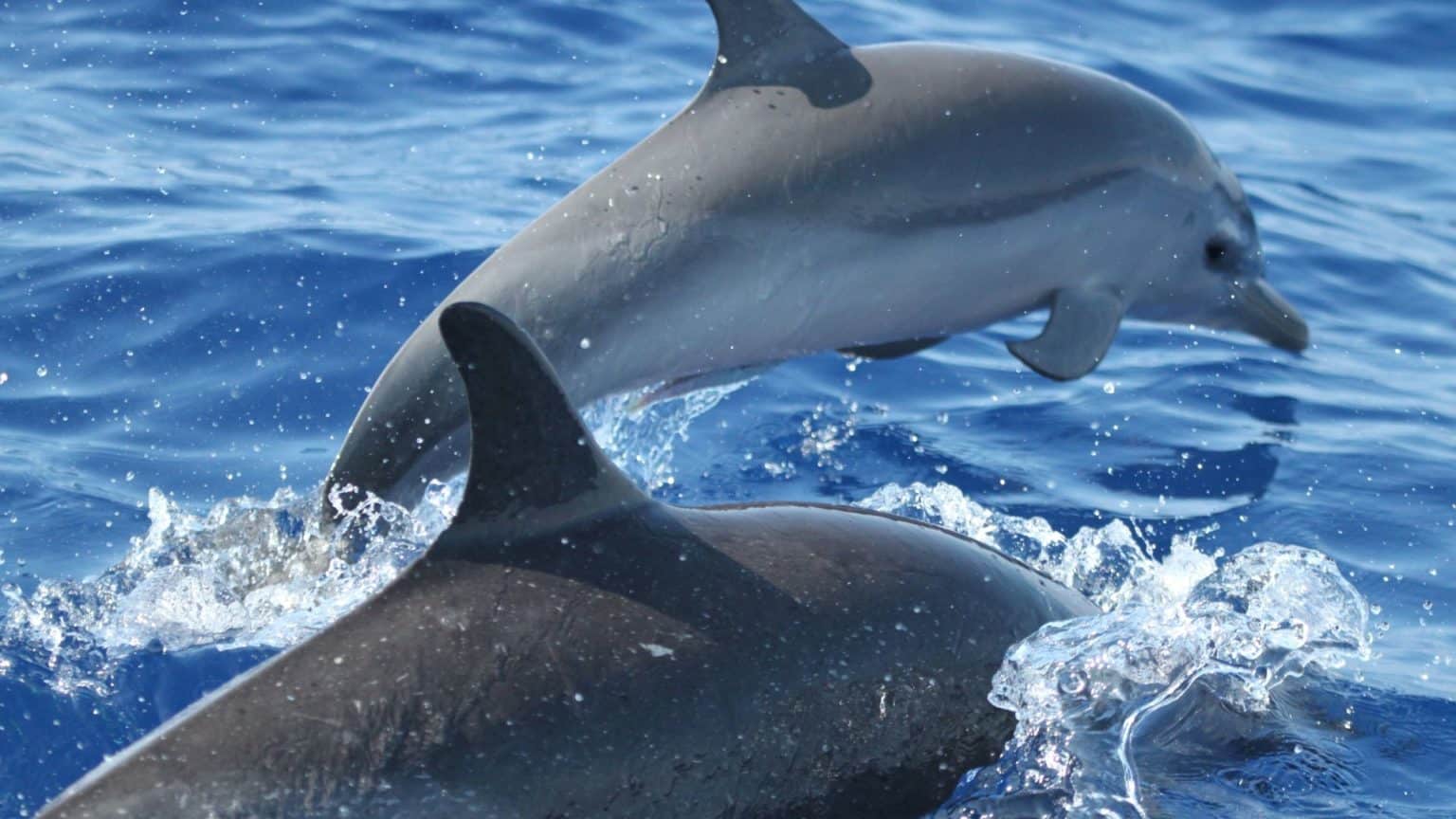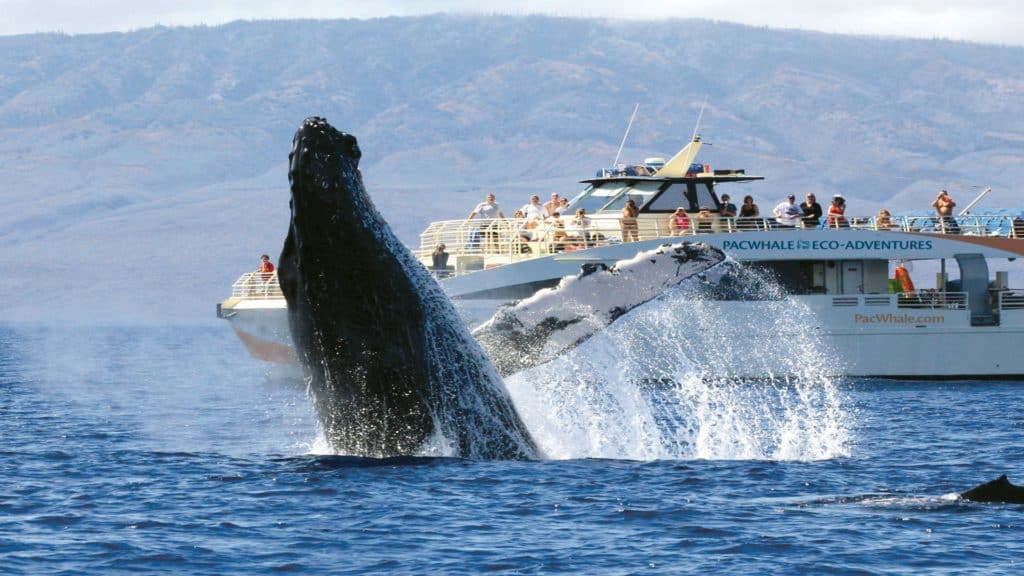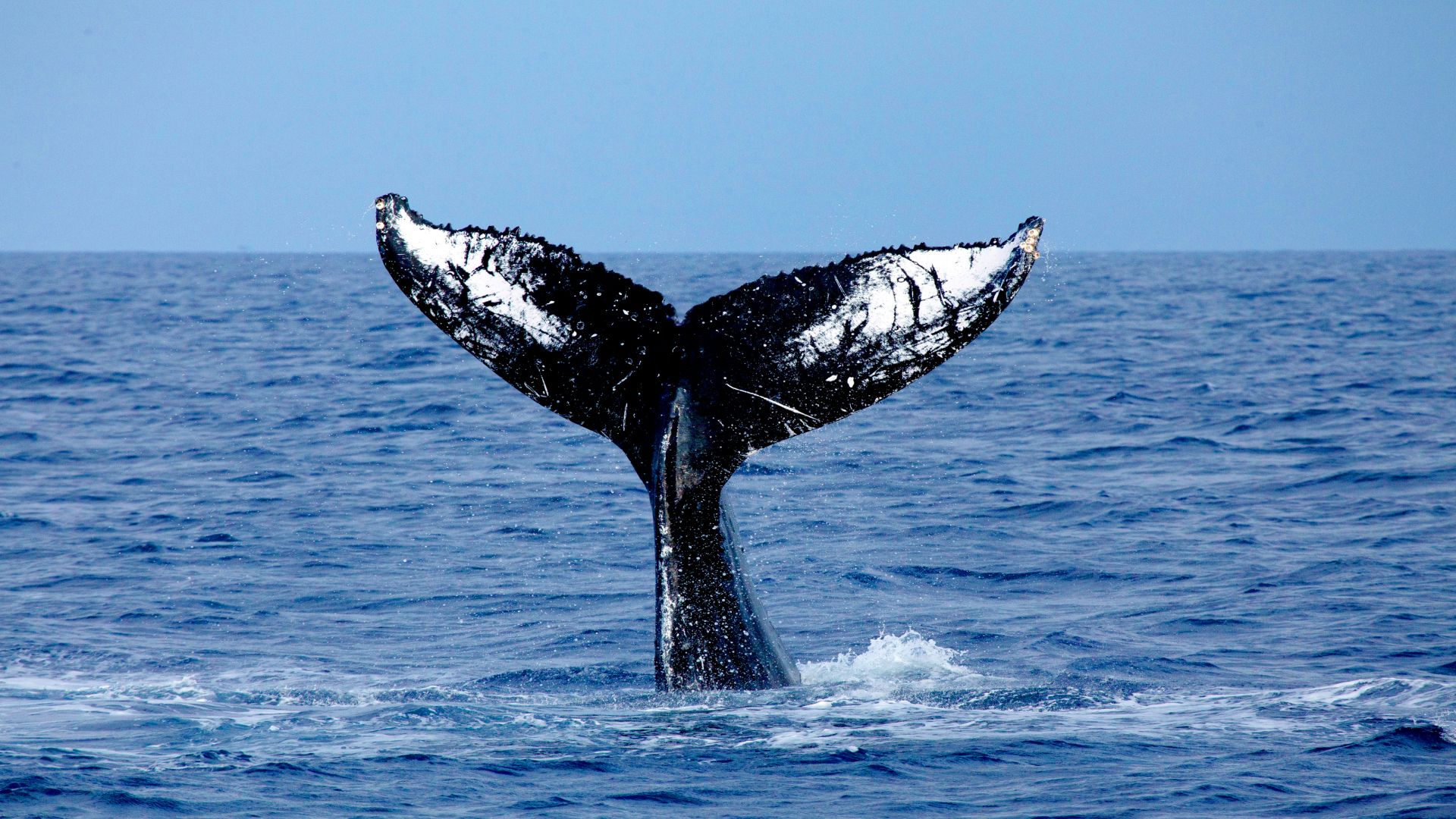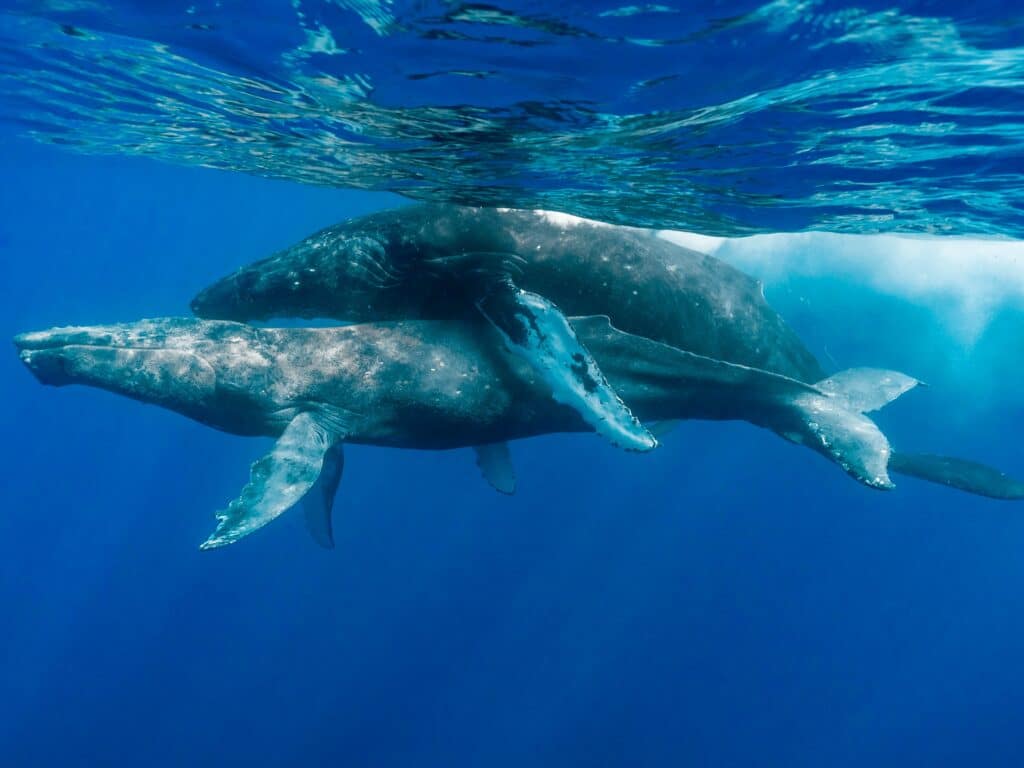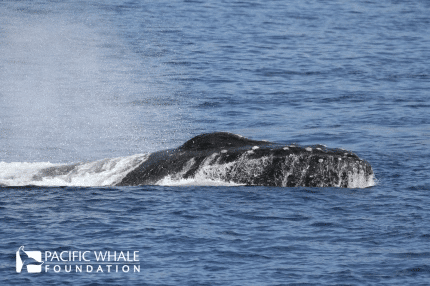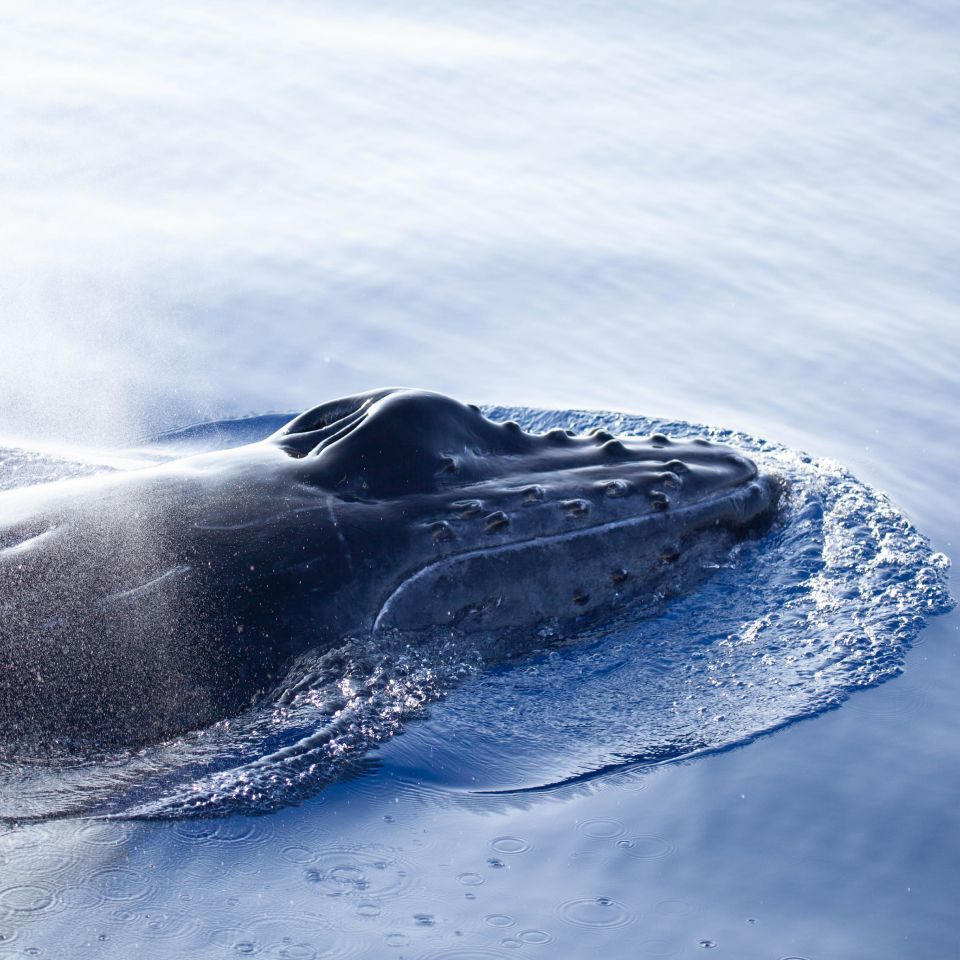
Humpback whales are migratory ocean mammals facing increasing threats from human activity
We study both North Pacific and South Pacific humpback whale populations that feed in icy waters around Alaska and the Antarctic then migrate to warmer waters (Hawai‘i and Queensland, Australia) in the winter to breed, give birth and care for their young. In Hawai‘i, humpbacks are seen annually in ‘Au‘Au Channel between the islands of Maui, Moloka‘i, Lana‘i and Kaho‘olawe, also known as Maui Nui. Our humpback whale research, which began more than 40 years ago, is vital to their well-being and survival as we work to mitigate the 5 Major Threats—bycatch, marine plastic pollution, climate change, unsustainable tourism and vessel collisions with marine animals—identified through our ongoing studies.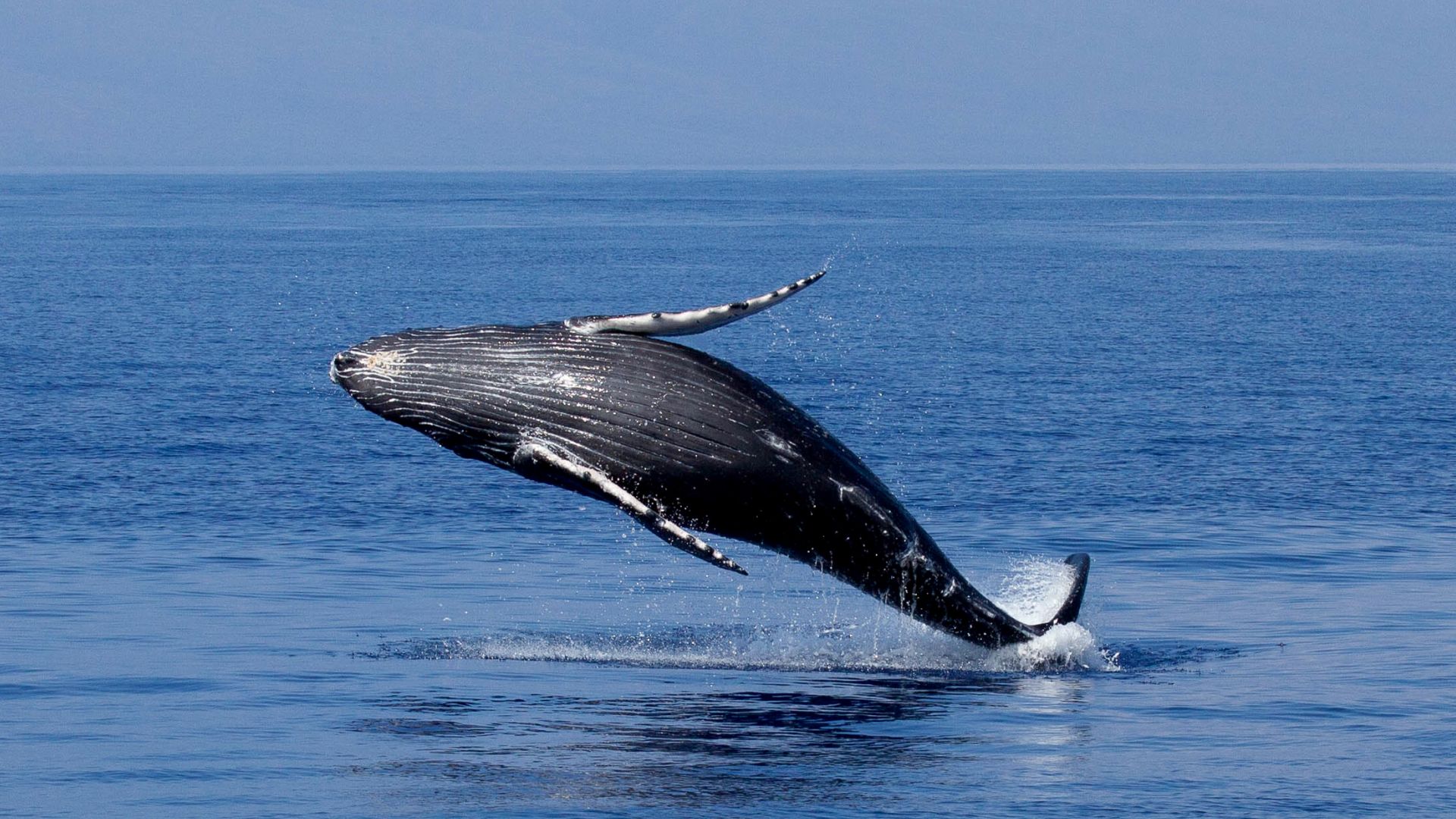
Key statistics
Interesting facts about humpback whales
35–45 feet (10.7–13.7 meters) in length
Dark on dorsal side, variably light on ventral side
Low, hooked or rounded dorsal fin
Tubercles on head that may become bloody during competition
Pectoral fins are 1/3 length of body
Two blowholes, exhalation can reach 15 feet
Arches back when diving (hence the name) and sometimes displays fluke (which we use for tracking)
Competition pods form when other males challenge a primary escort to a female (nuclear animal)
North Pacific populations commonly sighted near shore off Maui November – April
Fast Facts
1
Approximately 10,000 to 12,000 North Pacific humpback whales migrate to Hawaii to breed and calve
2
Not all whales migrate at once; rather they engage in “trickle migration” in which timing depends on age, sex and reproductive status
3
Only male whales sing; purpose of song is unknown
How We Are Helping
Our study efforts and goals include:
Research Efforts: Our Hawaiʻi, Australia, Ecuador, Chile, and Japan research focuses on humpback whales, making a significant impact on the conservation efforts in these regions.
Species Management: we work to improve management of humpback whales through continuous data analysis and collection to aid in mitigation strategies.
Diverse Data Collection: In addition to photo-identification, we gather data on the ecology, environment, and behavior of humpback whales, to understand marine ecosystems comprehensively.
Population Metrics: We study humpback whale demographics, health, and distribution to protect and preserve them.
Photo-ID Catalog: We continuously expand our humpback whale catalog to ensure long-term continuous monitoring.
Innovative Technology Integration: We leverage cutting-edge technologies to advance our research methodologies and increase our understanding of humpback whale populations.
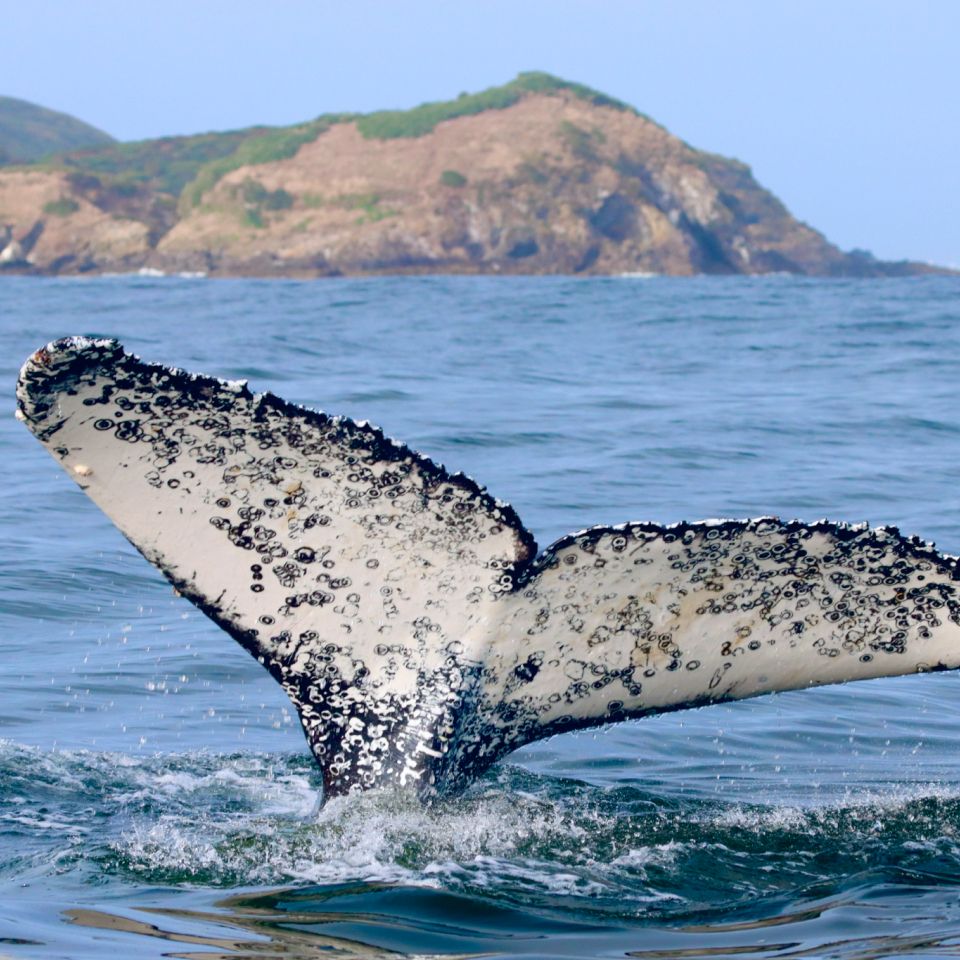
Project Partners
Recent Publications
Community Science and Education
You can be a community scientist and help PWF researchers protect marine mammals and their ocean home.
